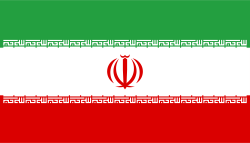New Reports Reveal Iran's Secret Tritium Extraction Facility Amid Rising Tensions
 Iran
IranIran is once again employing hostage diplomacy as a key strategy in its foreign relations, particularly during a critical year for nuclear negotiations. The recent release of Italian journalist Cecilia Sala, who was detained in December and freed on January 8, 2025, is indicative of Tehran's tactics. Sala's release coincided with the liberation of another European hostage, German-Iranian feminist Nahid Taghavi, as Iran seeks leverage through the incarceration of Western nationals.
Political analysts suggest that Iran's use of hostage diplomacy serves multiple purposes, including negotiating the release of Iranian prisoners abroad and unfreezing Iranian assets. Historically, this tactic has been employed to gain concessions during negotiations, particularly surrounding the Joint Comprehensive Plan of Action (JCPOA), a nuclear agreement initially reached in 2015. The JCPOA is set to expire on October 18, 2025, prompting Iran to increase its efforts.
With tensions rising and the political landscape shifting following the U.S. presidential election of 2024, Iran may perceive an opportunity to apply pressure on European nations. Observers note that the quick release of Sala could be a strategic concession to Italy, contrasting with the prolonged detention of other EU citizens in Iran.
As discussions regarding the nuclear program continue, implications of hostage-taking extend beyond individual cases, highlighting the fraught relationship between Iran and Western powers, particularly in light of France's pivotal role in nuclear negotiations and the complexities added by recent political changes in the U.S.
 Iran
Iran Iran
Iran Iran
Iran